Activity Type
Education
Territory protection

Or , our new artificial intelligence tool.

We operate in the Republic of the Congo in the exploration, development and production sectors – both onshore and offshore, in electricity generation and in the export of liquefied natural gas (LNG), in the production of biofuels (agri-business) to feed the biorefinery supply chain, and in the chemical sector. We focus our country support activities on access to equitable and sustainable energy, with the construction of the Djéno Power Station (CED) and the Congo Power Station (CEC). Having begun initial LNG production in February 2024 and started deliveries to global markets, we are aiming to enhance energy security within our decarbonization strategy. An agreement was also signed with the JV partners to supply gas to the local market before export. In support of gas production agreements, further agreements were signed to promote among other things, initiatives in the territory and for communities, with the aim of promoting access to education and vocational training in the country (Pointe-Noire and Ollombo). At the same time, we support various initiatives in the field of culture and art. In particular, Eni Congo is a member of the “Musée Cercle Africain Foundation”, in which the company plays a leading managerial role. The Cercle Africain Museum, opened in 2018, was built in parallel with the project for the cultural centre in the city of Makoua (completed in 2018) and the expansion in Brazzaville of the Memorial dedicated to the explorer Pierre Savorgnan de Brazza (completed in 2021).
The Republic of Congo
2013 – present
In the Republic of the Congo, we help to champion culture in partnership with local and international institutions, with the aim of consolidating our alliances for development. The UNESCO-sponsored Musée Cercle Africain was the first art gallery to open in the city of Pointe-Noire. The spaces, renovated and set up by Eni, are home to exhibition halls, permanent collections and temporary exhibitions dedicated to ritual art, painting and photography, reading, theatre and cinema. Workshops were also held inside the space, such as the 2023 photographic workshop to promote amateur artists, organised to celebrate the foundation of Pointe-Noire in 1921. As part of our cultural projects, we have expanded the Memorial to Pierre Savorgnan de Brazza, the explorer after whom Brazzaville, the capital of the Republic of Congo, is named. The multicultural centre of Makoua city was mainly used for vocational training.

The video about Cercle Africain: the first museum in the city of Pointe-Noire in Congo opened in 2018 thanks to Eni.
30 March 2020
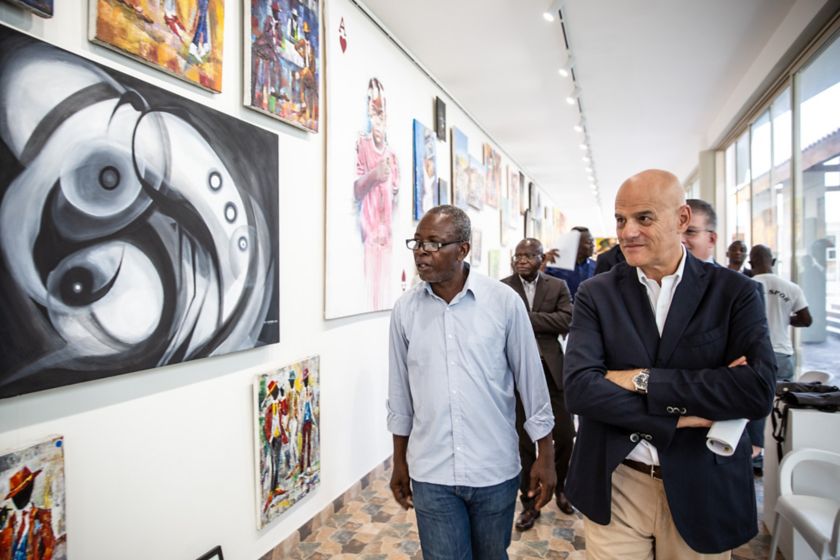
Claudio Descalzi, CEO of Eni, visiting the Le Cercle Africain Museum in Pointe Noire on the opening day
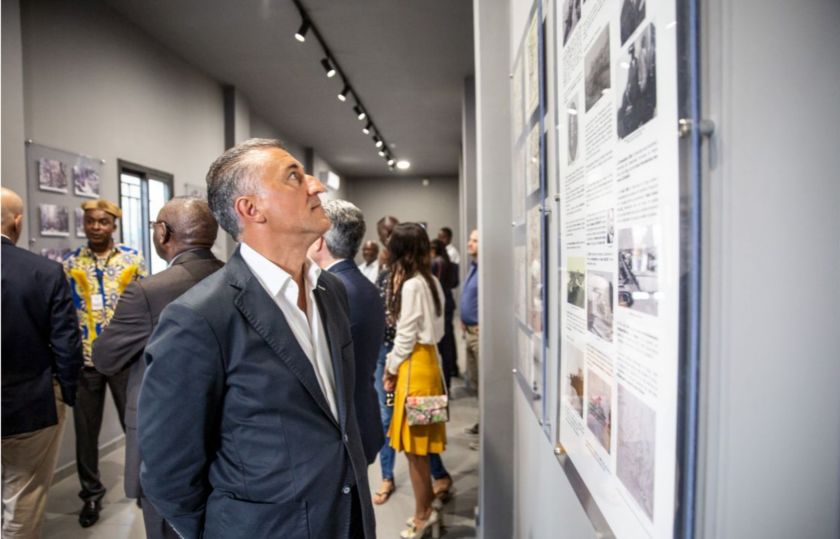
Guido Brusco, Chief Operating Officer Global Natural Resources and General Manager, visits the Congolese art museum in Pointe Noire on the day of its opening
The video about Cercle Africain: the first museum in the city of Pointe-Noire in Congo opened in 2018 thanks to Eni.
30 March 2020
in the equipped auditorium (project for the Memorial of Pierre Savorgnan de Brazza)
hosted during the inauguration (Musée Cercle Africain project)
opened in the multicultural centre (Makoua city multicultural centre project)
in the first photography workshop (Musée Cercle Africain project)
A workshop dedicated to up-and-coming Congolese photographers of different ages and backgrounds. This is what Eni Congo and the Musée du Cercle African organised to celebrate the 100th anniversary of the city of Pointe-Noire. A way of reaffirming Eni’s commitment to supporting cultural initiatives and projects in the countries where it is present. The aim was to enhance the participants' technical vision and creativity in representing the most interesting areas of the city. After almost eighty candidates responded to a call for participation, a selection made by the professionals involved in this training project led to a final selection of twenty-two. They were then supervised by a technical team of professional photographers from Italy and a local studio.

The video about the workshop dedicated to photographers from congo of different ages and backgrounds organized by Eni Congo and the Musée Cercle Africain.
18 April 2023
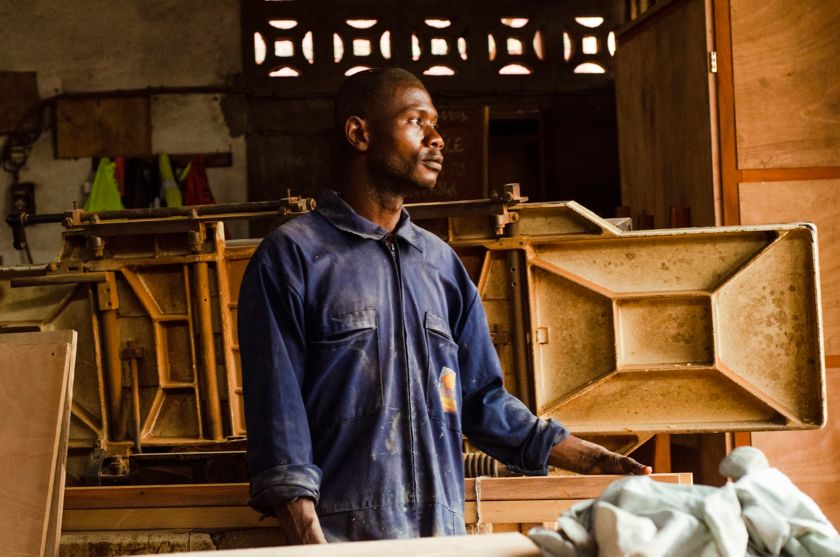
A shot taken by participants in the photography workshop
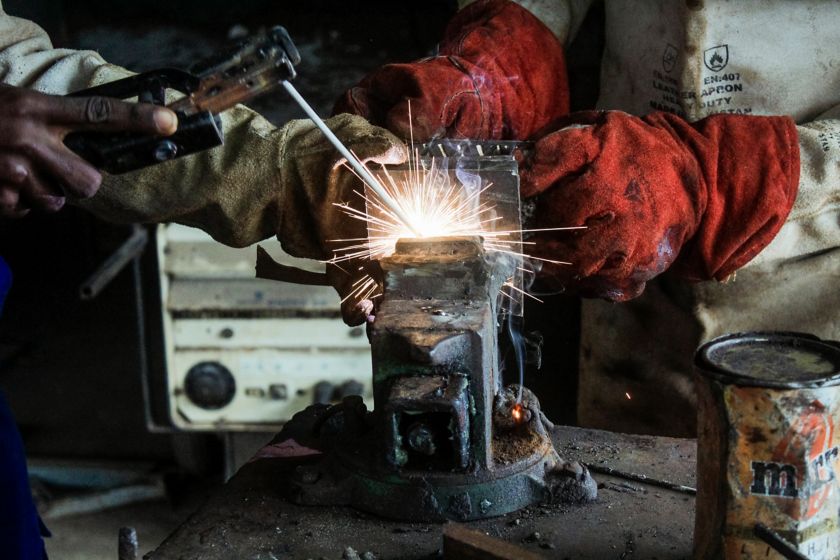
A shot taken by participants in the photography workshop
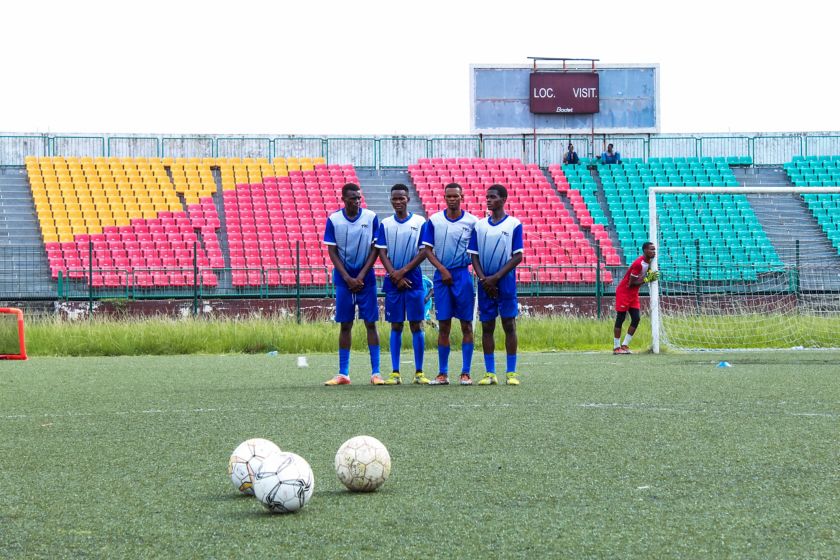
A shot taken by participants in the photography workshop
The video about the workshop dedicated to photographers from congo of different ages and backgrounds organized by Eni Congo and the Musée Cercle Africain.
18 April 2023
Read the stories, case studies and testimonials behind our contribution to a socially equitable energy transition in the Sustainability Report.


If you want to change topic, clear the chat and make a new query to receive more relevant results.
This will delete the question history.
If you want to change topic, clear the chat and make a new query to receive more relevant results. This will delete the question history.
Here you can find the full list of your queries.
The answers are generated by artificial intelligence, therefore they may contain inaccuracies. Please read the terms and conditions of use.

EnergIA is an innovative tool based on artificial intelligence capabilities, which can help you navigate the contents of eni.com, quickly finding answers to your questions. EnergIA can also perform a search on a specific topic, providing the most up-to-date data available, or it can invite you to delve deeper into a topic of your interest by suggesting links and specific readings. Start now!
EnergIA is an innovative tool based on artificial intelligence capabilities, which can help you navigate the contents of eni.com, quickly finding answers to your questions. Start now!
EnergIA (ener'dʒia) is a system based on Generative Artificial Intelligence.
Thanks to this technology, we can respond to your requests by querying the most relevant content and documents available on eni.com. (Note: financial documents from the last 12 months and press releases from the last 2 years are considered.)
Through EnergIA, you can delve into topics of interest and have a real-time window into the world of Eni.
If you wish to search for a specific document, press release or news, use the traditional search engine via the magnifying glass icon.
Like all systems that leverage Generative Artificial Intelligence, EnergIA may generate inaccurate or outdated responses. Always consult the sources that EnergIA proposes as the origin of the generated information.
If the system fails to find an exact match for the requested content, it still tends to provide a response.
If you find any inaccuracies in the provided response, please send us your feedback at the bottom of the page: it will be very helpful for us to improve.
Remember that the content generated by the system does not represent Eni’s official position. We therefore invite stakeholders to refer to their designated contacts for official statements: Press Office for journalists, Investor Relations for analysts and investors, Company Secretariat for shareholders etc..
EnergIA can understand questions posed in almost all languages, but we prefer to provide you with a response in English or Italian, the two languages available on eni.com. If you ask a question in Italian, the content on the site in Italian will be consulted. If you ask it in English or any other language, the content in English will be consulted. (Note: the language Eni uses for financial documents/content is predominantly English.)
If questions are formulated that violate the set security criteria, the system will not proceed with processing the response. Please remember not to send personal data.
By using this service, the users acknowledge that they have read and accepted the terms and conditions of use.
Search
EnergIA (ener'dʒia) is a system based on Generative Artificial Intelligence.
Thanks to this technology, we can respond to your requests by querying the most relevant content and documents available on eni.com. (Note: financial documents from the last 12 months and press releases from the last 2 years are considered.)
Through EnergIA, you can delve into topics of interest and have a real-time window into the world of Eni.
If you wish to search for a specific document, press release or news, use the traditional search engine via the magnifying glass icon.
Like all systems that leverage Generative Artificial Intelligence, EnergIA may generate inaccurate or outdated responses. Always consult the sources that EnergIA proposes as the origin of the generated information.
If the system fails to find an exact match for the requested content, it still tends to provide a response.
If you find any inaccuracies in the provided response, please send us your feedback at the bottom of the page: it will be very helpful for us to improve.
Remember that the content generated by the system does not represent Eni’s official position. We therefore invite stakeholders to refer to their designated contacts for official statements: Press Office for journalists, Investor Relations for analysts and investors, Company Secretariat for shareholders etc..
EnergIA can understand questions posed in almost all languages, but we prefer to provide you with a response in English or Italian, the two languages available on eni.com. If you ask a question in Italian, the content on the site in Italian will be consulted. If you ask it in English or any other language, the content in English will be consulted. (Note: the language Eni uses for financial documents/content is predominantly English.)
If questions are formulated that violate the set security criteria, the system will not proceed with processing the response. Please remember not to send personal data.
By using this service, the users acknowledge that they have read and accepted the terms and conditions of use.
A new window into Eni’s world, at your disposal. EnergIA is an innovative tool based on artificial intelligence capabilities, which can help you navigate the contents of eni.com, quickly finding answers to your questions.